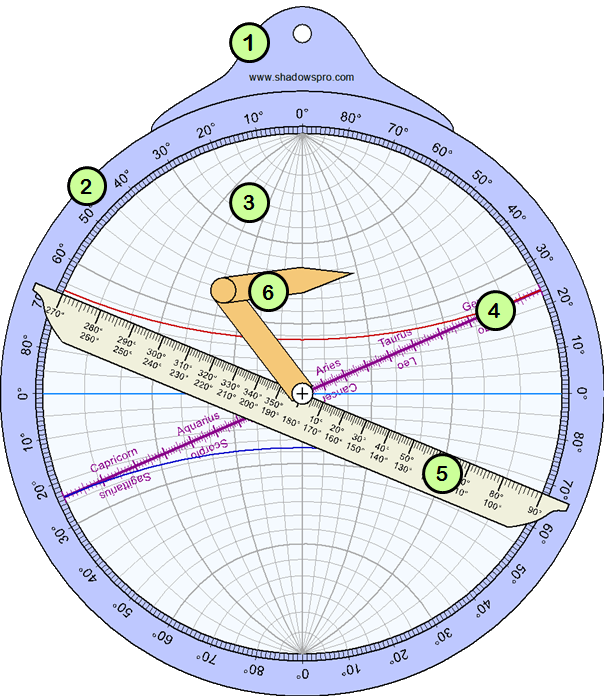The universal astrolabe provides a solution to the main drawback of the planispheric astrolabe, which is the need to have several plates to cover a range of latitudes. Old astrolabes were equiped with 2 to 4 plates which make the set quite heavy to carry. The universal astrolabe can work at any latitude.
Shadows Pro offers the Saphae Arzachelis, an ancient model invented during the 11th century by the Andalusian astronomer Arzaquiel. In this astrolabe, the stereographic projection is not done from a pole on the equatorial plane, but from the vernal point on a collure plane (passing through the poles).
Components of a universal astrolabe

1 - the throne, as on a planispheric astrolabe, allows the user to hold it vertically when pointing a star with the alidade.
2 - the limb is scaled in degrees.
3 - the plate shows meridians and parallels.
4 - the ecliptic is scaled in ecliptic longitude and marked with names of Zodiac constellations.
5 - the ruler rotates around the axis. It is scaled in ecliptic longitude.
6 - the point, also called brachiolus, is articulated and rotates with the ruler. Its end can be moved to a point on the plate at the intersection of a meridian and a parallel.
This drawing of universal astrolabe was made with Shadows Pro »
Principles
The universal astrolabe's main use is the conversion of astronomical coordinates, for example between equatorial and ecliptic coordinates.
Learn more on astrolabes in the » User Manual
Continue with next page: » Astrolabes in Arts